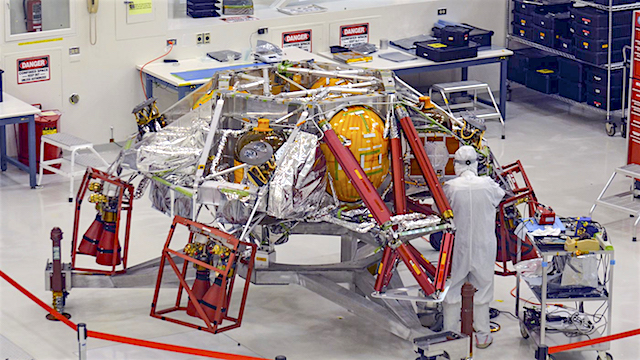 NASA’s Mars 2020 mission has begun the assembly, test and launch operations (ATLO) phase of its development, on track for a July 2020 launch to Mars.
NASA’s Mars 2020 mission has begun the assembly, test and launch operations (ATLO) phase of its development, on track for a July 2020 launch to Mars.
The first planned ATLO activities will involve electrical integration of flight hardware into the mission’s descent stage. The Mars 2020 rover, as well as its cruise stage, aeroshell and descent stage — a rocket-powered “sky crane” that will lower the rover to the planet’s surface — will undergo final assembly at the Spacecraft Assembly Facility High Bay 1 at NASA’s Jet Propulsion Laboratory in Pasadena, California.
“No better place in the world to assemble NASA’s next Mars rover than JPL’s High Bay 1,” said Mars 2020 Project Manager John McNamee at JPL. “On the floor you’ll see the components of our spacecraft taking shape — put together by people who are the best in the world at what they do. And on the wall behind them you will see all the logos of the historic missions of exploration that have also been assembled in High Bay 1 in the past.”
Those missions include the Ranger missions to the moon (the first time America reached out and touched the moon), the Mariner mission to Venus (the first spacecraft to successfully encounter another planet) and Mars rovers.
Over the next year-and-a-half, engineers and technicians will add subsystems such as avionics, power, telecommunications, mechanisms, thermal systems and navigation systems onto the spacecraft. The propulsion systems were installed earlier this year on the cruise and descent stage main structures. [More at link]








